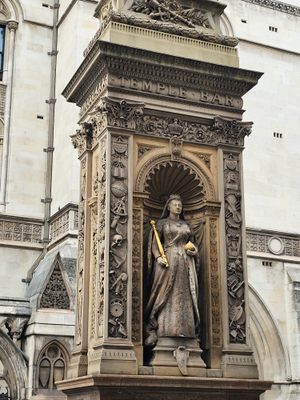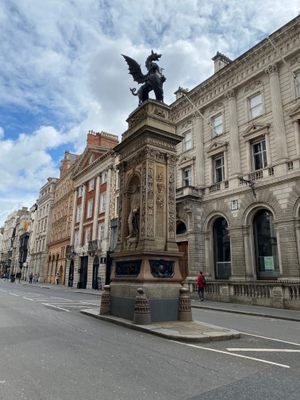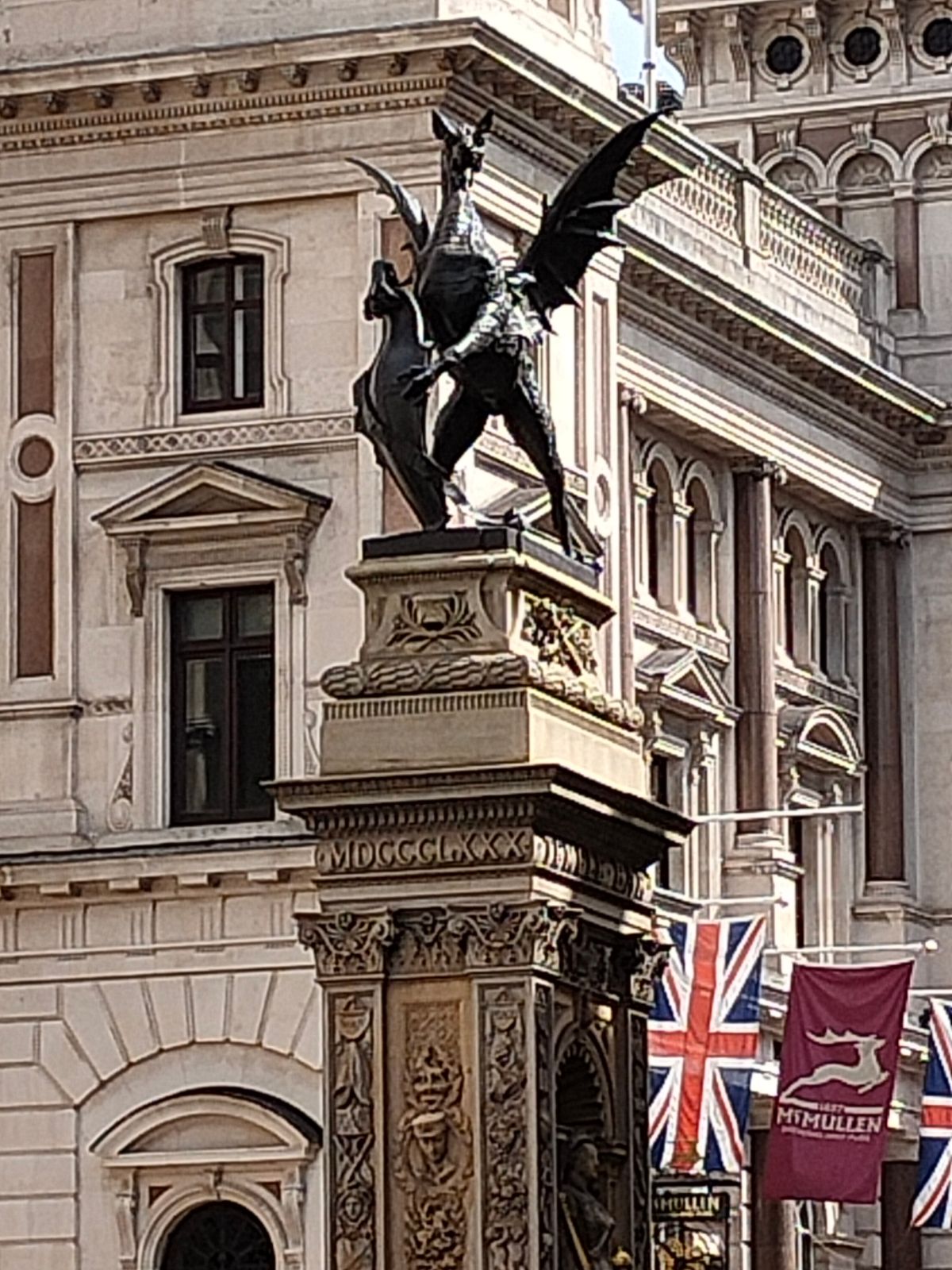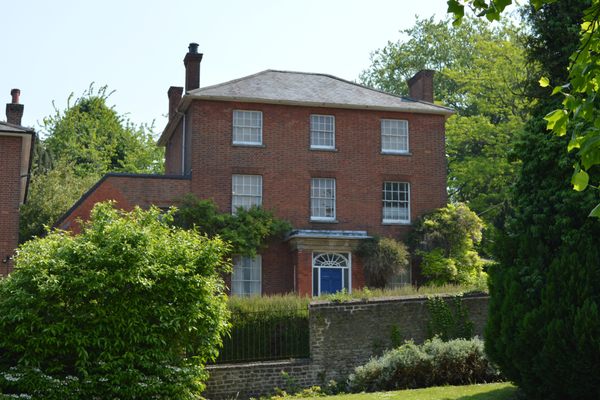About
In the Temple Bar area of London, just outside the Royal Courts of Justice, stands a pedestal crowned by a sculpture of a dragon that appears ready to swoop down on passersby.
This impressive Victorian-era sculpture was traditionally known to locals as "The Griffin," perhaps due to its feline-like posture and body shape, and its snarl that is reminiscent of a big cat. However, this creature is in fact meant to represent a dragon.
The dragon was created in 1880 by the sculptor Charles Bell Birch, who had been commissioned by the Royal family and government to produce an ornate sculpture to surmount the pedestal marking what were the historic gates of the City of London.
The Victorians were romanticists and consciously revived trends from earlier periods of history. As such, Birch chose the dragon as the subject of the sculpture because the beast had always been a culturally important symbol for the City of London and the English nation.
Dragons are creatures of heraldic significance and are prominent characters within English folklore, from the ancient Anglo-Saxon mythological stories such as Beowulf to the tale of Saint George the dragon slayer and patron saint of England.
This particular dragon also plays another important symbolic role. In keeping with the folkloric beliefs about the treasure-guarding instincts of these mythical beasts, the Temple Bar dragon serves a totemic purpose as a protective guardian of the treasures of London.
Related Tags
Know Before You Go
You can walk by the dragon at any time. It's in the middle of the street.
Community Contributors
Added By
Published
December 13, 2018





























































